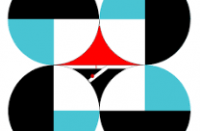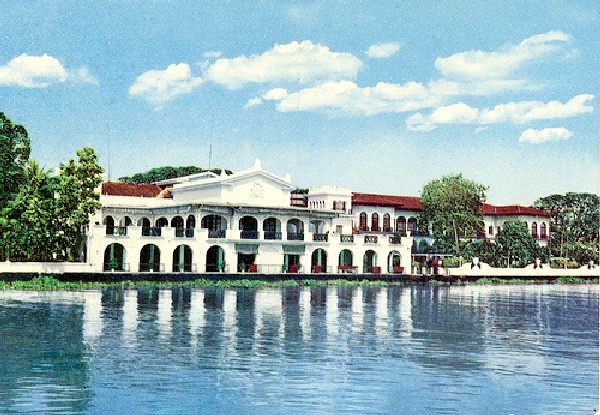
Ukrainian opposition leader Oleh Tyahnybok addresses anti-government protesters during a rally in central Kiev, February 2, 2014.
Credit: Reuters/David Mdzinarishvili
(Reuters) – When protest leaders in Ukraine helped oust a president widely seen as corrupt, they became heroes of the barricades. But as they take places in the country’s new government, some are facing uncomfortable questions about their own values and associations, not least alleged links to neo-fascist extremists.
Russia’s president Vladimir Putin claims Ukraine has fallen into the hands of far-right fascist groups, and some Western experts have also raised concerns about the influence of extremists. Yet many Ukrainians see the same groups as nationalist stalwarts and defenders of the country’s independence.
Two of the groups under most scrutiny are Svoboda, whose members hold five senior roles in Ukraine’s new government including the post of deputy prime minister, and Pravyi Sector (Right Sector), whose leader Dmytro Yarosh is now the country’s Deputy Secretary of National Security.
Right Sector activists wearing black ski masks, bullet-proof vests and military fatigues still hold several buildings close to Kiev’s Independence Square. Activists on the street declined to speak to Reuters about their organization. An individual described as their “commander” directed a reporter to two spokespeople who also declined requests for interviews.
On Tuesday the group called for supporters to patrol Wikipedia. In a posting on Vkontakte, the Russian equivalent of Facebook, Right Sector wrote: “We appeal to people who can make changes to Wikipedia. In the English version (with Russian worse) Right Sector is depicted as an organization that has a fascist and neo-Nazi views, with appropriate consequences. If you have an opportunity – correct this misunderstanding.”
According to Wikipedia’s logs, on Monday the Right Sector entry described the party as having “borderline fascist or neo-fascist views.” On Tuesday the page was modified 174 times, including changes to describe Right Sector as an “organization to protect demonstrators” and a “youth patriot organization.”
After the intervention of Wikipedia administrators, the page was locked and reverted to saying that Right Sector was “described by major Western newspapers as having far right or neo-fascist views.”
Expert opinions on Svoboda in particular are divided. Per Anders Rudling, an associate professor at Lund University in Sweden and researcher on Ukrainian extremists, has described Svoboda as “neo-fascist”. He told Britain’s Channel 4 News: “Two weeks ago I could never have predicted this. A neo-fascist party like Svoboda getting the deputy prime minister position is news in its own right.”
But Ivan Katchanovski, a political scientist at the University of Ottawa who has studied the far-right in Ukraine, disagreed that Svoboda was so extreme. “Svoboda is currently best described as a radical nationalist party, and not as fascist or neo-Nazi,” he said. “It is now not overtly anti-Semitic.”
Andrew Srulevitch, director of European Affairs for the Anti-Defamation League, an international group based in the U.S. that monitors anti-Semites and other political extremists, said: “Svoboda has been disciplined in its messaging regarding Jews since the Maidan demonstrations started in November, but they have a history of anti-Semitic statements to overcome, and a clear political program of ethnic nationalism that makes Jews nervous.”
Oleh Tyahnybok, leader of Svoboda, described the row over his party as an “information war”. He told Reuters: “Unfortunately, the information concerning Svoboda’s radicalism is not true. It comes from European and Russian mass-media. They just wanted to create an image of horror, of extremists, anti-Semites and xenophobes, and started to write about our party some stupid things.”
WARTIME ROOTS
Svoboda grew out of an organization called the Social-Nationalist Party of Ukraine (SNPU), which was founded in 1991 and had a “wolf’s angel” logo that resembled a swastika. According to Svoboda’s website, the party’s ideology stems from Yaroslav Stetsko, a former leader of the Organisation of Ukrainian Nationalists (OUN).
With roots among Western Ukrainian First World War veterans, the underground OUN fought for independence for that region from Poland. Then led by Stepan Bandera, the OUN welcomed the Nazi invasion of the Soviet Union as a means of gaining independence for the whole country. But after the OUN declared self-government in 1941, with Stetsko as prime minister, the Nazis turned on the party.
Both Stetsko and Bandera were imprisoned, including in Sachsenhausen concentration camp, but were released in 1944 to help organize sabotage against the Soviet army’s advance.
Some saw – and see – the OUN’s leaders as heroes who defended Ukrainian independence. But some leading historians of the Holocaust have concluded that members of the OUN assisted in the Nazis’ killing of Jews as well as fighting against the Soviet army.
In 2004, the SNPU combined with other groups and was renamed Svoboda. Tyahnybok, its longtime leader, made a speech that year in western Ukraine praising a World War Two era militia which fought against Russians, Germans, Jews, and “other scum.” Responding to subsequent public criticism, he said he was not anti-Semitic, but pro-Ukrainian.








